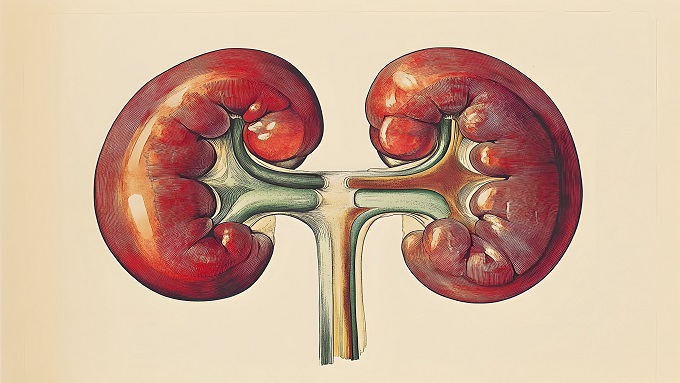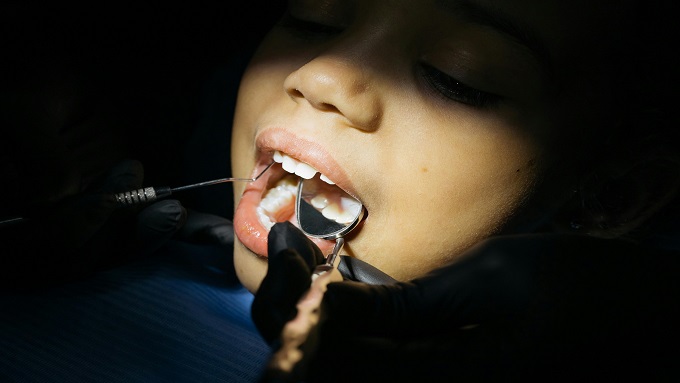FEATURES OF THE CLINICAL MANIFESTATIONS OF AUTOIMMUNE OPTIC NEUROPATHY IN MULTIPLE SCLEROSIS ON CORTICOSTEROID THERAPY

Downloads
Highlights
- Intravenous corticosteroid treatment followed by oral clinical treatment can reduce the incidence of post-treatment optic neuritis recurrenc
- Visual acquisition increases at one-month post-treatment.
Abstract
Background: The clinical picture of autoimmune optic neuropathy, known as neuritis, is strongly influenced by the unique structure of the human anterior visual pathway. The central nervous system autoimmune is related to multiple sclerosis (MS). Optic neuropathy is an injury that frequently results in acute inflammatory damage. Objective: This study aimed to determine the clinical manifestations of autoimmune optic neuropathy in multiple sclerosis and identify diseases with appropriate corticosteroid therapy using systematic review methods. Material and Method: This study used a systematic review method to analyze topic-related kinds of literature on Scopus, PubMed, and Google Scholar databases. The literature screening process was carried out based on the PRISMA 2020 guidelines. Result: Regarding the post-treatment recurrence rate of optic neuritis, the use of intravenous corticosteroids alone and intravenous corticosteroid followed by oral administration may clinically reduce the incidence of recurrence in the patients compared those receiving placebo and oral administration. This suggests that intravenous corticosteroid followed by oral corticosteroid treatment is effective in helping to reduce the incidence of recurring optic neuritis. Conclusion: Intravenous corticosteroid treatment followed by oral administration may clinically reduce the incidence of post-treatment recurrence of optic neuritis in multiple sclerosis (MS) patients.
Al-Eajailat, S. M., Al-MadaniSenior, M. V. 2014. The role of magnetic resonance imaging and visual evoked potential in management of optic neuritis. Pan African Medical Journal, 17. doi: 10.11604/pamj.2014.17.54.2462.
Beck, R. W., Cleary, P. A., Anderson, M. M., et al. 1992. A randomized, controlled trial of corticosteroids in the treatment of acute optic neuritis. New England Journal of Medicine, 326(9): 581–588. doi: 10.1056/NEJM199202273260901.
Bennett, J. L. 2019. Optic neuritis. Continuum: Lifelong Learning in Neurology, 25(5): 1236–1264. doi: 10.1212/CON.0000000000000768.
Bennett, J. L., Costello, F., Chen, J. J., et al. 2023. Optic neuritis and autoimmune optic neuropathies: advances in diagnosis and treatment. The Lancet Neurology, 22(1): 89–100. doi: 10.1016/S1474-4422(22)00187-9.
Cleary, P. A., Beck, R. W., Anderson, M. M., et al. 1993. Design, methods, and conduct of the optic neuritis treatment trial. Controlled Clinical Trials, 14(2): 123–142. doi: 10.1016/0197-2456(93)90015-6.
Dahanayake, P., Beck, R. W., Anderson, M. M., et al. 2021. The effect of optic neuritis treatment trial (ONTT) combined corticosteroid regimen on pattern reversal visual evoked potentials: A prospective follow-up study. BMC Ophthalmology, 21(1): 324. doi: 10.1186/s12886-021-02086-z.
Gal, R. L., Vedula, S. S., Beck, R. 2012. Corticosteroids for treating optic neuritis. in Gal, R. L. (ed.) Cochrane Database of Systematic Reviews. Chichester, UK: John Wiley & Sons, Ltd. doi: 10.1002/14651858.CD001430.pub3.
Ghadiali, L. K., Odel, J. G. 2019. Optic neuropathy. in The Columbia Guide to Basic Elements of Eye Care. Cham: Springer International Publishing: 399–427. doi: 10.1007/978-3-030-10886-1_36.
Goodwin, J. 1996. High dosage corticosteroids in the treatment of optic neuritis and prophylaxis of multiple sclerosis. Clinical Immunotherapeutics, 6(5): 405–412. doi: 10.1007/BF03259359.
Halilovic, E. A., Alimanovic, I., Suljic, E., et al. 2014. Optic neuritis as first clinical manifestations the multiple sclerosis. Materia Sociomedica, 26(4): 246–248. doi: 10.5455/msm.2014.246-2481.
Ismaiel, A., Mohsen, A., Anwar, A. 2020. Comparative study between visual evoked potential and visual acuity, a field of vision, and fundus examination as a screening tool for early diagnosis of hydroxychloroquine and chloroquine retinal toxicity in rheumatic patients. Journal of Medicine in Scientific Research, 3(3): 161. doi: 10.4103/JMISR.JMISR_29_20.
Kapoor, R., Miller, D. H., Jones, S. J., et al. 1998. Effects of intravenous methylprednisolone on outcome in MRI-based prognostic subgroups in acute optic neuritis. Neurology, 50(1): 230–237. doi: 10.1212/WNL.50.1.230.
Kawachi, I. 2017. Clinical characteristics of autoimmune optic neuritis. Clinical and Experimental Neuroimmunology, 8(S1): 8–16. doi: 10.1111/cen3.12354.
de Lott, L. B., Burke, J. F., Andrews, C. A., et al. 2020. Association of individual-level factors with visual outcomes in optic neuritis. JAMA Network Open, 3(5): e204339. doi: 10.1001/jamanetworkopen.2020.4339.
de Lott, L. B., Bennett, J. L., Costello, F. 2022. The changing landscape of optic neuritis: A narrative review. Journal of Neurology, 269(1): 111–124. doi: 10.1007/s00415-020-10352-1.
Menon, V., Mehrotra, A., Saxena, R., et al. 2007. Comparative evaluation of megadose methylprednisolone with dexamethasone for treatment of primary typical optic neuritis. Indian Journal of Ophthalmology, 55(5): 355. doi: 10.4103/0301-4738.33821.
Morrow, S. A., Fraser, J. A., Day, C., et al. 2018. Effect of treating acute optic neuritis with bioequivalent oral vs intravenous corticosteroids. JAMA Neurology, 75(6): 690. doi: 10.1001/jamaneurol.2018.0024.
Naumovska, M., Sheikh, R., Bengtsson, B., et al. 2018. Visual outcome is similar in optic neuritis patients treated with oral and i.v. high-dose methylprednisolone: A retrospective study on 56 patients. BMC Neurology, 18(1): 160. doi: 10.1186/s12883-018-1165-6.
Ozdogar, A. T., Baba, C., Kahraman, T., et al. 2022. Effects and safety of exergaming in persons with multiple sclerosis during corticosteroid treatment: A pilot study. Multiple Sclerosis and Related Disorders, 63: 103823. doi: 10.1016/j.msard.2022.103823.
Page, M. J., McKenzie, J. E., Bossuyt, P. M., et al. 2021. The PRISMA 2020 statement: An updated guideline for reporting systematic reviews. BMJ: 71. doi: 10.1136/bmj.n71.
Pineles, S. L., Balcer, L. J. 2019. Visual loss. in Liu, Volpe, and Galetta's Neuro-Ophthalmology. Elsevier: 101–196. doi: 10.1016/B978-0-323-34044-1.00005-5.
Sellebjerg, F., Nielsen, H. S., Frederiksen, J. L., et al. 1999. A randomized, controlled trial of oral high-dose methylprednisolone in acute optic neuritis. Neurology, 52(7): 1479–1479. doi: 10.1212/WNL.52.7.1479.
Smith, T., Zeeberg, I., Sjö, O. 1986. Evoked potentials in multiple sclerosis before and after high-dose methylprednisolone infusion. European Neurology, 25(1): 67–73. doi: 10.1159/000115989.
Tomassini, V., Sinclair, A., Sawlani, V., et al. 2020. Diagnosis and management of multiple sclerosis: MRI in clinical practice. Journal of Neurology, 267(10): 2917–2925. doi: 10.1007/s00415-020-09930-0.
Walton, C., King, R., Rechtman, L., et al. 2020. Rising prevalence of multiple sclerosis worldwide: Insights from the Atlas of MS, third edition. Multiple Sclerosis Journal, 26(14): 1816–1821. doi: 10.1177/1352458520970841.
Copyright (c) 2024 Dalia Sharliz Raihana, Lukisiari Agustini, Deasy Fetarayani

This work is licensed under a Creative Commons Attribution 4.0 International License.
1. The journal allows the author(s) to hold the copyright of the article without restrictions.
2. The journal allows the author(s) to retain publishing rights without restrictions.
3. The legal formal aspect of journal publication accessibility refers to Creative Commons Attribution 4.0 International License (CC-BY).
































